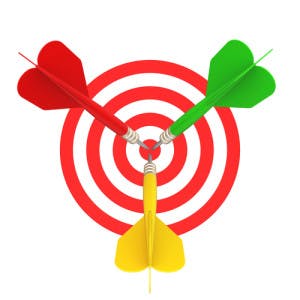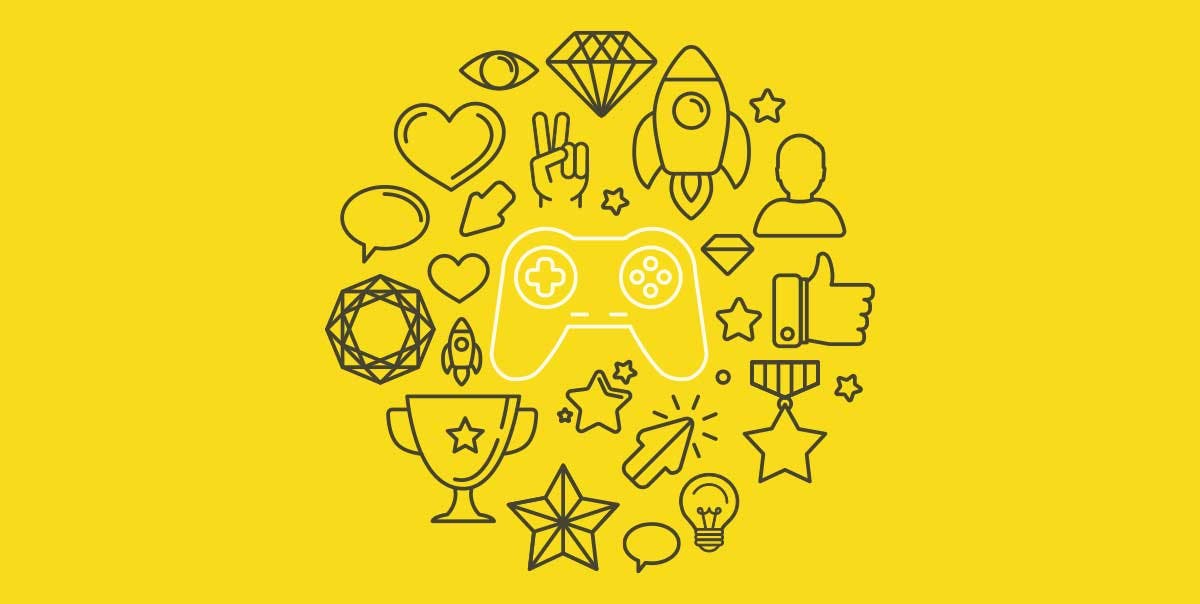Using Sales Gamification to Win More Deals
Christine Lee
“As a salesperson, you must be competitive because sales is a zero-sum game,” writes Anthony Iannarino.
The president and chief sales officer of Solutions Staffing believes, “If you are competing for your dream client’s business, either you will win the business or your competitor will. To win, you have to be competitive. You have to love a good fight. You have to want to win o ver your rivals.”
ver your rivals.”
That’s fine if you want to lead a sales team by brandishing the old saw: “winning isn’t everything, it’s the only thing.”
But it’s not always so cut and dried. Great salespeople have a complex set of characteristics that extend beyond competitiveness to include empathy, assertiveness (not aggression), and self-awareness. Innovative sales managers understand that it takes many different approaches to motivate sales team members to win.
Sales gamification is one strategy that’s designed to be a win-win for managers and sales reps. The term describes the larger trend in which game mechanics are used in workplace processes to help engage people and change behavior.
Top 3 Ways to Use Sales Gamification to Win More Deals
How to use gamification to win more deals:
- Understand That It’s Not a Game
- Don’t Eliminate Competition Completely
- Reward Sales Team Collaborators
1. Understand That Sales Gamification Is Not a Game
To apply this concept to your own sales team, it’s important to know first that sales gamification isn’t about playing games.
Instead, Rajat Paharia posts, it’s the internal motivation triggered by playing games like Monopoly — where all you stand to win is a pile of paper money and bragging rights. As the author of the book Loyalty 3.0 and founder of Bunchball, Paharia’s taken a hard look under the hood of employee engagement.
There he found five things that spark motivation in anyone’s mind, all of which are present when you play a simple game.
- Autonomy: I control.
- Mastery: I improve.
- Purpose: I make a difference.
- Progress: I achieve.
- Social interaction: I connect with others.
The difference comes in because leadership should be constantly engaging its staff to stretch further. Once the Monopoly game is over, it’s done. To keep the momentum going for a sales team, it’s important to take those motivators and plug them into a bigger picture.
In essence, it’s the way sports teams work. Every time a match is played, the stats are analyzed by coaches, players, and fans. Within a sales force, gamification takes the stats from each salesperson and pushes them together into a master blueprint that tracks the success of the entire team.
Tip: Implement a sales gamification software — Always know how your team is performing with Yesware. Yesware gives you reports on your daily activity, engagement metrics, and team outcomes, as well as syncs with your CRM. For both Gmail and Outlook.
2. Don’t Eliminate Competition Completely
The competitive spirit does have a place in gamification — in the larger context of the team. The way it works best is to create a real-time leaderboard (there are multiple apps for that) which makes the data very personal, another key component of sparking engagement.
Bob Marsh, CEO, and founder of LevelEleven sees it this way:
“Include employee photo displays and engagement tools, such as audio splashes that demand attention when someone makes a big move in a competition. Whether on flat-screen monitors in central locations around the office, or on each employee’s iPhone, these leaderboards would surround entire sales teams, keeping individuals cognizant of where they, and their colleagues, stand in competitions — and motivating them to see their face move to the top.”
With this strategy, Marsh says his team realized a 230 percent spike in sales. Adopting similar sales contests helps to spark engagement.
3. Reward Sales Team Collaborators
Though sales staff may be eager to see their avatar move up the ranks of the leaderboard, the approach suggested through Paharia’s Bunchball is not to create a “star” culture that fosters unhealthy gamified competition.
In fact, data shows that sales team collaboration affects team growth.
Instead of unhealthy gamified competition, a successful gamification initiative recognizes the individual and the team equally.
Some companies do this by turning sales performance into a fantasy sports competition.
Harvard Business Review describes one case where a sales team partnered with gamification provider Ambition to increase its inside sales referrals by 200%. Reps on the sales team became part of a fantasy league and were motivated not only by the social and interactive component but by the fact that the system was fair. Employees and managers were on the same page with the data and transparency of each rep’s performance.
When global consulting firm Bluewolf tried gamification to enhance social collaboration, each employee’s profile linked to all their recent blog posts, white papers, and social media updates. As the information was shared both internally and externally, Bluewolf was able to create “a network of brand ambassadors” that elevated the company’s entire leadership profile.
The days of winning a Cadillac or a set of steak knives are coming to an end.
Turn your email sends into a game — see when they open, click, and read attachments.
Get sales tips and strategies delivered straight to your inbox.
Yesware will help you generate more sales right from your inbox. Try our Outlook add-on or Gmail Chrome extension for free, forever!
Related Articles
Melissa Williams
Melissa Williams
Casey O'Connor
Sales, deal management, and communication tips for your inbox

